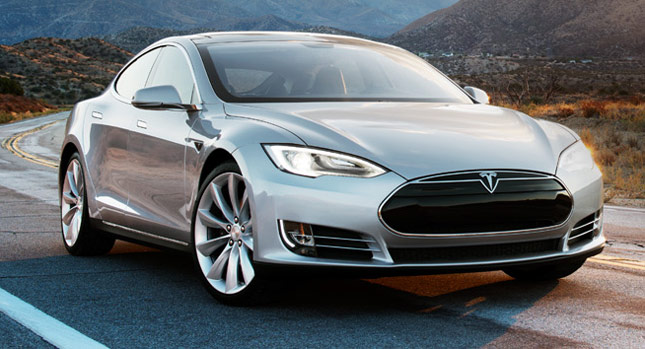Even while Tesla continues to downplay two previous Model S collisions with underbody damage that led to car fires, the Californian maker of EVs says it is bringing the fire risk “down to virtually zero” with the installation of additional battery shields – three in total- on all cars manufactured from March 6.
If you already own a Model S, Tesla will retrofit the shields free of charge, upon request, or when you take the car in for service. Previously, Tesla had provided an over-the-air software update to increase the default ground clearance of the Model S at highway speeds.
According to Tesla, the three-layer protection starts with a hollow aluminum bar designed to either deflect objects entirely or absorb the impact, followed by a titanium plate that is said to have strength-to-weight properties similar to aerospace and military applications, while the third and last item is a shallow angle, solid aluminum extrusion that further absorbs impact energy.
“The protective qualities of the underbody shields are substantial, but their effect on the overall structure of the vehicle is minimal,” Tesla founder and CEO, Elon Musk, said in a blog post. “In total, the shields only have a 0.1 percent impact on range and don’t affect ride or handling. Wind tunnel testing shows no discernible change in drag or lift on the car.”
Musk went on to say that, Tesla has performed rigorous tests and the plates have proved to work as designed.
“During the course of 152 vehicle level tests, the shields prevented any damage that could cause a fire or penetrate the existing quarter inch of ballistic grade aluminum armor plate that already protects the battery pack,” explained Musk. “We have tried every worst case debris impact we can think of, including hardened steel structures set in the ideal position for a piking event, essentially equivalent to driving a car at highway speed into a steel spear braced on the tarmac.
Musk continues to believe that Tesla was wrongly targeted by the press on this issue, stating that the odds of fire in a Model S are roughly 1 in 8,000 vehicles or five times lower than those of an average gasoline car, when 200,000 gasoline car fires occurred last year in North America alone.
“It is important to note that there have been no fire injuries (or serious, permanent injuries of any kind) in a Tesla at all,” said Musk. “Nonetheless, we felt it was important to bring this risk down to virtually zero to give Model S owners complete peace of mind.”
By John Halas
PHOTO GALLERY









